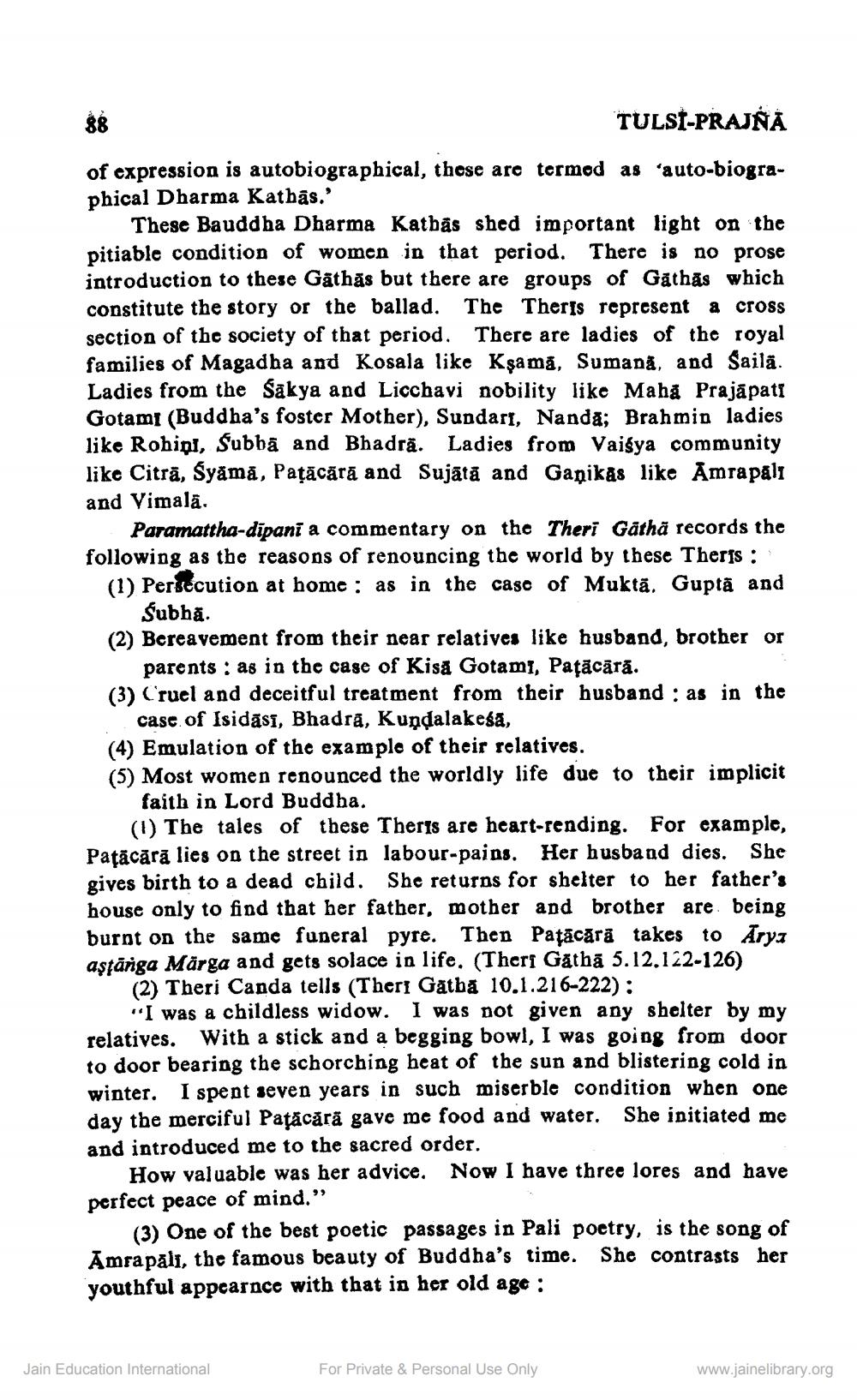________________
SO
TULSI-PRAJÁNA
of expression is autobiographical, these are termod as 'auto-biographical Dharma Kathās.'
These Bauddha Dharma Katbas shed important light on the pitiable condition of women in that period. There is no prose introduction to these Gāthās but there are groups of Gáthás which constitute the story or the ballad. The Therls represent a cross section of the society of that period. There are ladies of the royal families of Magadha and Kosala like Ksama, Sumană, and Sailā. Ladies from the Sakya and Licchavi nobility like Maha Prajapati Gotami (Buddha's foster Mother), Sundari, Nanda; Brahmin ladies like Rohini, Subbā and Bhadra. Ladies from Vaisya community
tā, Syamă, Patācārā and Sujātă and Gapikas like Amrapalı and Vimalā.
Paramattha-dīpani a commentary on the Theri Gathā records the following as the reasons of renouncing the world by these Therfs : (1) Persecution at home : as in the case of Muktā. Gupta and
Subha. (2) Bereavement from their near relatives like husband, brother or
parents : as in the case of Kisa Gotami, Pațācārā. (3) Cruel and deceitful treatment from their husband : as in the
case of Isidāsi, Bhadra, Kundalakesa, (4) Emulation of the example of their relatives. (5) Most women renounced the worldly life due to their implicit
faith in Lord Buddha.
(1) The tales of these Therfs are heart-rending. For example, Patācāra lies on the street in labour-pains. Her husband dies. She gives birth to a dead child. She returns for shelter to her father's house only to find that her father, mother and brother are being burnt on the same funeral pyre. Then Patācārā takes to Arya astārga Märga and gets solace in life. (Theri Gathā 5.12.122-126)
(2) Theri Canda tells (Theri Gatba 10.1.216-222):
"I was a childless widow. I was not given any shelter by my relatives. With a stick and a begging bowl, I was going from door
door bearing the schorching heat of the sun and blistering cold in winter. I spent seven years in such miserble condition when one day the merciful Pagăcără gave me food and water. She initiated me and introduced me to the sacred order.
How valuable was her advice. Now I have three lores and have perfect peace of mind."
(3) One of the best poetic passages in Pali poetry, is the song of Amrapali, the famous beauty of Buddha's time. She contrasts her youthful appcarnce with that in her old age :
Jain Education International
For Private & Personal Use Only
www.jainelibrary.org




